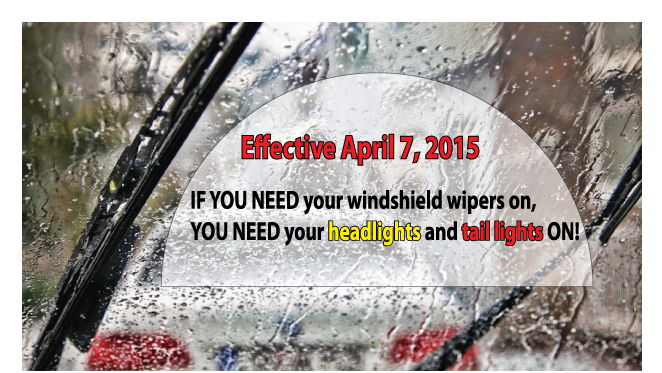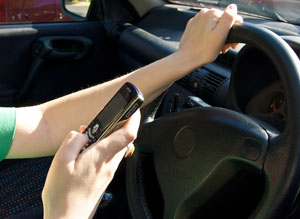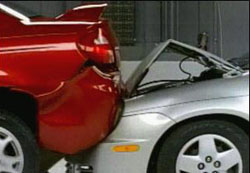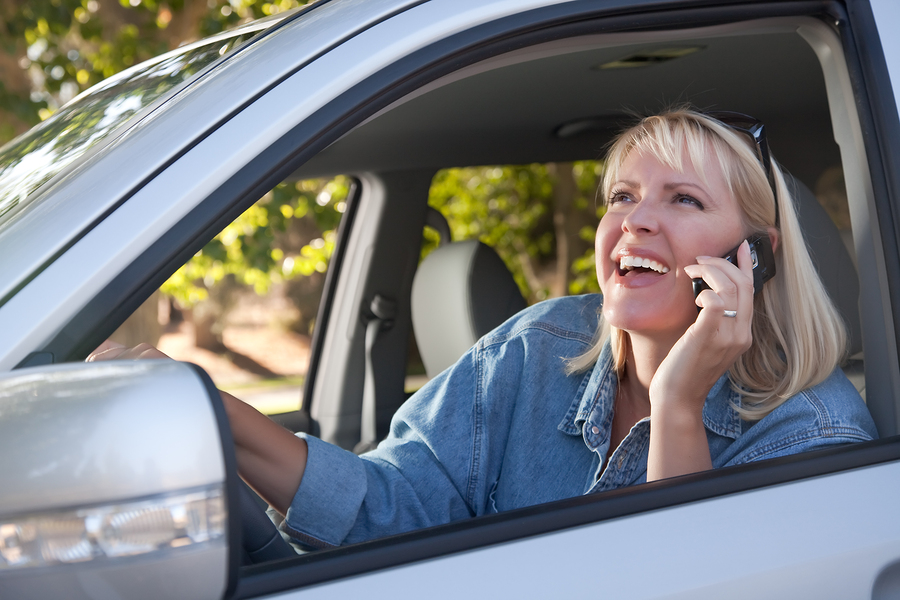Massachusetts Hands-Free Cell Phone Driving Law: What You Need to Know
The new Massachusetts law requiring hands-free use of all mobile devices while driving goes into effect on February 23, 2020.
- No more holding your cell phone while driving. You can now be pulled over and ticketed simply for holding a cell phone or other mobile devices while driving.
- There will be significant fines for offenses and multiple offenses will result in surcharges that can impact your insurance premiums. The costs can be substantial.
- The law was passed to increase road safety by deterring distracted driving. While it’s best to avoid cell phone use while driving, there are circumstances where you may find it necessary to use a mobile phone or device. Be sure that you fully understand the impacts of this new law and your devices are properly equipped to legally be used while driving.
Massachusetts law requiring headlights and tail lights to be on when raining or foggy

Effective April 7, 2015, a new MA law requires that you turn on your headlights and tail lights whenever you turn on your windshield wipers. The new law also requires YOU to use your headlights and tail lights when visibility is less than 500 feet. Failure to follow the new law could result in a ticket AND and insurance surcharge. So, please remember to Let Your Lights Shine….when it’s rainy or foggy.
Information about ride sharing and the risks you might be taking.
 Ride Sharing – A dangerous business activity you might want to be informed on.
Ride Sharing – A dangerous business activity you might want to be informed on.
Ridesharing is gaining in popularity because it is more convenient than calling a taxi. It also provides those with insured automobiles a way to earn some extra money. Before you decide that you would like to engage in this business activity, you might wish to inform yourself about some of the unpleasant things that are happening in this industry.
Who Can Participate in Ridesharing?
In order to participate in this venture, you must have automobile insurance, but it would be to your advantage to read the fine print first. Much of the most important coverage on your personal auto insurance policy is excluded while a vehicle is being used for “public or livery conveyance.”
A public or livery conveyance is when you use your vehicle to transport people in exchange for a fee or money. Whenever coverage is excluded, as with the “public or livery conveyance exclusion”, you will be personally liable for damages or injuries caused by you while in the process of performing your ride-share duties.
Does the Company Carry Liability Insurance?
Some ride-share companies provide excess liability insurance for their drivers. Uber is one of those companies. It carries a $1 million liability policy, in excess of, your own personal liability coverage. However, this does not mean that you will always be covered. If the right circumstances present themselves, you may be entirely on your own if you cause a collision. For example, collision coverage….the coverage that pays for damage to your own vehicle…..would not be covered under the ” public or livery conveyance exclusion”!!!
A Case in Point
Lyft and Sidecar
Another thing to beware of is how executives describe their companies. Some organizations like Lyft and Sidecar shy away from the “rideshare” label, but that is exactly what these companies are offering to their customers. Drivers and riders come together for a fee, so Lyft and Sidecar drivers are also susceptible to the public or livery conveyance exclusion even if their companies advertise their services as something different.
Parents, share this information with your students away from home. Share it with your friends, share it with anyone who you think might have reason to be informed.
Read More about how your policy might respond to Ride-Sharing Situations.
The dangers of text messaging and driving
I was driving recently and came up behind a black Jeep Cherokee on the highway. There was no cause for concern at first but after following behind for a brief time, I began to notice this driver was having difficulty keeping their vehicle between the lines on the road.
the highway. There was no cause for concern at first but after following behind for a brief time, I began to notice this driver was having difficulty keeping their vehicle between the lines on the road.
For ten minutes this operator proceeded to do what can only be described as acrobatic driving; driving that visually appeared to be so unsafe I decided to back off and give this person enough room so that when they crashed I would not be affected, it was that serious. “Is this person drunk?”
I thought but as I reasoned with myself I realized that while they weren’t doing a particularly good job of keeping their SUV between the lines, I hadn’t witnessed any other behavior to convince me that they were out and out intoxicated. Yet, I couldn’t be completely sure; you can only watch someone bounce between the dividing line and shoulder so many times before you have to say to yourself “it doesn’t matter if they are drunk, having a heart attack or just plain distracted you have to question the state of safety and just back off(and perhaps call the police).
A short while down the road, our side of the highway broke into two lanes, and I caught up to the Cherokee once again, this time pulling past the vehicle. As I pulled up alongside the Cherokee to pass…..you might have already suspected, what I witnessed was a young man in his mid to late 20s with two hands on his “Smart” phone and, apparently with only his knee, steering the vehicle. I’m not sure he even noticed me.
The National Safety Council and other American research organizations have some alarming statistics about motor vehicle crashes in the United States that help illustrate how the increasing prevalence of cell phone use and the danger of text messaging is directly impacting motor vehicle-related deaths.
Among them:
- Motor vehicle crashes are one of the top three causes of death for all U.S citizens.
- Motor vehicle crashes are the No. 1 cause of death for U.S. citizens aged 3 to 34.
- Roughly 1.6 million car crashes each year are directly attributable to cell phone use, both texting and talking.
- The risk of motor vehicle collision increases by a factor of 23 when a motor vehicle operator texts while driving.
- In 1995, only 13 percent of the U.S. population were cell phone subscribers. As of 2009, that number has increased to an eye-popping 91 percent.
This last statistic may be the most troubling because it means we have reached a point in time where virtually every U.S. citizen is a cell phone user. Many young adults have never known a time in their lives where cell phone use hasn’t been a part of their every day existence ? in the home, in the school and, most troubling, in the car. Texting and driving laws, while well meaning, are very difficult to enforce. Given the increase in motor vehicle crashes and fatalities that texting brings, the car insurance buying public is likely to feel the effects of impaired driving in their insurance costs for many years to come.
In the end, it’s important to remember that just because you can do something doesn’t mean you should. Put down the cell phone when you’re driving. Let’s be careful out there.
What to do in case of an auto accident
Automobile accidents are unexpected and stressful and can leave  even the most experienced motorists shocked, stunned and more than a little shaken. If you are in an accident, O’Connor & Co. Insurance Agency is committed to helping restore your peace of mind as soon as possible.
even the most experienced motorists shocked, stunned and more than a little shaken. If you are in an accident, O’Connor & Co. Insurance Agency is committed to helping restore your peace of mind as soon as possible.
Accidents happen and they can be quite upsetting, especially if you don’t know what to do after it happens. Whether it was your fault, or the other driver’s, it’s important to know what steps to take following an accident to make filing your claim a little easier:
If you’re in an auto accident, obtain the following information:
- Date, time, and city of the accident
- Accident location (street names and landmarks)
- Year, make, model, color and plate number of the other vehicle
- Driver’s name, address, and telephone number of other vehicle
- Owner’s name, address, and phone number (if not the driver)
- Name, address, and phone number of occupants in all vehicle(s) involved in the accident
- Name of the insurance carrier for the other vehicle
- Policy number for the other vehicle, if possible
- Name and phone number of witnesses
- If your vehicle has to be towed, make sure to get the tow companies information
CLICK HERE to pull up an Accident Reporting Form to print and keep in your glove compartment. This form will help you to gather the Clipboardnecessary information in the event of an accident.
in your glove compartment. This form will help you to gather the Clipboardnecessary information in the event of an accident.
Once you have collected the information from the accident; contact us at the agency and we will set up your insurance claim, go over the claim process with you, and address any questions or concerns you may have.
You do not have to get an estimate on your own. An appraiser from your insurance company will determine the dollar amount of damages to your vehicle. The appraiser may be available at a drive-in appraisal location designated from your insurance company or an appointment can be set up for the appraiser to see your vehicle at your convenience.
An insurance adjuster will be assigned to your claim and the adjuster will determine the final settlement and the liability of your accident.
A Commonwealth of Massachusetts Crash Operator Report must be completed if damage to either vehicle is over $1000 or if anyone in either vehicle is injured. We have crash reports at the agency and can help you fill it out. We can also forward the report to your insurance adjuster, police, and Registry of Motor Vehicles.
Automobile accidents take a toll on everyone involved; financially, emotionally and sometimes physically. The claim process will be easier following an accident if you know the details of your policy. If you have any people in car questions regarding what would be covered in the event of an accident we are here to help make sure you have the correct coverage for your specific needs.
Side notes:
Collision Coverage: An optional coverage that provides money to repair your vehicle no matter whose fault the accident is. Your deductible will be applied, if you are found at fault. This coverage is required by most banks, if you have a loan on your car.
Comprehensive Coverage: An optional coverage that provides protection against: fire, theft, glass breaks, vandalism, hail, flood, malicious mischief and contact with birds or animals. Although comprehensive coverage does come with a deductible, there is no deductible on glass replacements or repairs.
Substitute Transportation: An optional coverage that reimburses you up to the limits shown on your policy’s declaration page. Substitute transportation provides coverage for certain situations if your vehicle was involved in a collision and is being repaired or replaced.
O’Connor & Co. Insurance Agency is an independent agency available to make coverage recommendations, review your policy, and keep up with your changing insurance needs. Please contact us with any questions or concerns you may have.

